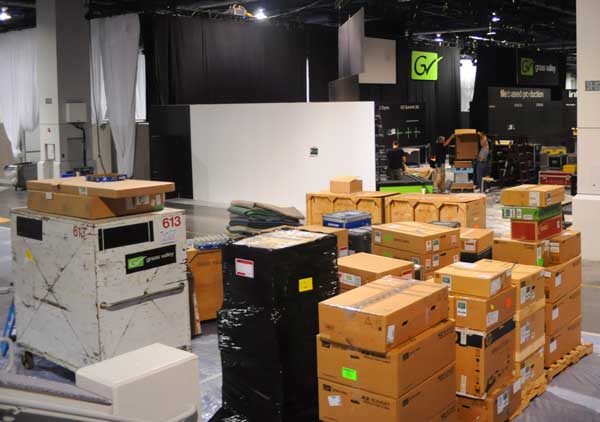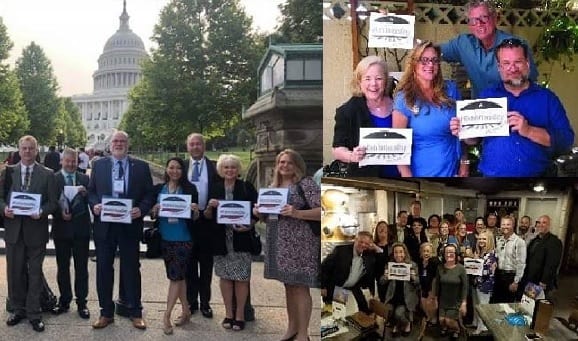We’re so close to our neighbors in the north, we often forget that we’re crossing the border and that there are some serious logistical questions to consider when exhibiting at a show in Canada. When exhibiting abroad, such as in Europe or Asia, companies often opt to “build and burn” or rent locally due to transportation costs and customs issues. But what about in Canada? What should you take into account when deciding whether to ship your exhibit to Canada?

Some key factors to consider as you make your decision are:
• Transportation cost and length of transport time.
• Customs, duties and broker fees.
• Drayage costs.
Transportation
The length of time for your shipment to reach Canada will depend on where it’s originating and its destination in Canada. Using centrally located Chicago as an example, your shipment could reach Toronto or Montreal in a day or two, but a further-out destination like Vancouver will take a little longer. Adding a couple extra days into your timeline for customs clearance is always a good idea.
Customs, Duties and Broker Fees
When shipping your exhibit to Canada, there is not only the transportation cost to consider, but also duties and taxes, customs clearance and broker fees. Compared to other countries, shipping your exhibit from the U.S. into Canada is a little easier, and there are options to avoid heavy duties and taxes on the temporary import of your exhibit, such as using the ATA Carnet or U.S. Customs Form 4455 and its Canadian equivalent, E29B, for temporary imports. But you still run the risk of customs clearance delays and fines if your paperwork is not in order or does not match the shipment. While this all seems a little daunting, utilizing a reputable broker and a knowledgeable logistics team generally make this process relatively painless. Ed Jacquest, MG Design Associates’ transportation manager, finds using the show broker helps to get shipments through customs quickly. If he’s able to get the documents submitted as soon as they’re ready and before the shipment leaves the dock, he’s often able to get the shipment cleared by the time it reaches the border.
If you decide to ship into Canada, make sure you to explore all your options for minimizing your costs on duties and taxes. If you will be shipping to multiple countries throughout the year, the ATA Carnet will be your best option as it is good for a year and utilized by more than 75 participating countries. If your booth will return directly to the States, using the Form 4455 and E29B for temporary imports is the more likely choice. Customs agents are required to physically inspect a certain percentage of shipments per day at any point of entry, so make sure your paperwork and documents mirror exactly what is in your shipment to avoid any unnecessary delays.
Drayage
Another factor to consider is drayage. How heavy is your exhibit? Most shows in Canada calculate drayage similarly to shows in the U.S. by charging a set rate per hundred pounds. In a few cases, you might see drayage charges calculated by an estimate for the amount of time the forklift will be required for transporting your goods from the dock to your booth. Regardless of the method of calculation, there will be drayage charges, so be sure to include this in your cost estimate when planning for the show.
As with any event, planning and preparing ahead for your tradeshow is key to ensuring everything goes smoothly regardless of which option you choose. Yes, there are customs issues to deal with, but proper planning can help minimize your risk. Make sure to tap into the many resources that are available to you. This can include consulting with your account management team from your exhibit house. They can be a great resource and assist with any questions about the process of clearing your exhibit through customs and which method of importation will be used. You will find “build and burns” are not as prevalent in Canada as they are in other parts of the world, but if you think a local rental might be the right for you, your account management team can assist with this as well. Every situation is unique, so find the right solution for you.
Kate Sims is the global account manager and Kelli Steckbauer is the director of global business for MG Design, an exhibit design, event planning and management services provider.





























